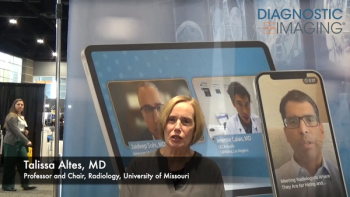
Crystal Run system links images, EMR
Integration today comes in tastes that whet the appetite but don’t satisfy. And even these come grudgingly.
Integration today comes in tastes that whet the appetite but don’t satisfy. And even these come grudgingly. At Crystal Run Healthcare in Middletown, NY, in-house IT staff worked with engineers from EMR system and services provider NextGen Healthcare and RIS/PACS vendor Carestream to create an integrated system that builds medical images into the patient records that referring doctors see.
“Where we're doing similar tasks, the integrated patient record keeps us from missing or overlooking things,” said Dr. Greg Spencer, chief medical officer and a practicing specialist of internal medicine at Crystal Run who uses the integrated system to evaluate his own patients.
Interpretations begin with the radiologist reading images using the PACS. But at Crystal Run, the radiologist’s report is transferred to the EMR system. The report is then immediately accessible to any of the 180 referring physicians at the dozen Crystal Run facilities.
Reaching this level of integration was not easy, according to Miguel Hernandez, director of IT at Crystal Run. Even though the NextGen EMR system and Carestream RIS/PACS share HL7 compatibility, they operate on dissimilar platforms. Complicating matters was the dictation system (integrated with the RIS) that radiologists use to create their reports.
“We learned early that if you’re going to try to integrate [all these different systems], you'd better make sure you have people with all the right skill sets in the same room to work out the technical issues,” Hernandez said.
At present, patient information flows out of-but not into-the RIS/PACS. Radiologists might like to access lab reports and other patient data, but they can't. For now they must be content with orders and demographics conveyed by their RIS, or log in to the NextGen system.
If and when the full potential of IT integration is achieved, the RIS may become as useless as the human appendix.
“There is a lot of similarity in what the RIS and EMR do. I think they could be consolidated at some point,” Hernandez said.
He noted, however, that context may be the determining factor.
“If you're working at an imaging center rather than a hospital, a stand-alone RIS would be needed to do the scheduling,” he said.
Newsletter
Stay at the forefront of radiology with the Diagnostic Imaging newsletter, delivering the latest news, clinical insights, and imaging advancements for today’s radiologists.




























